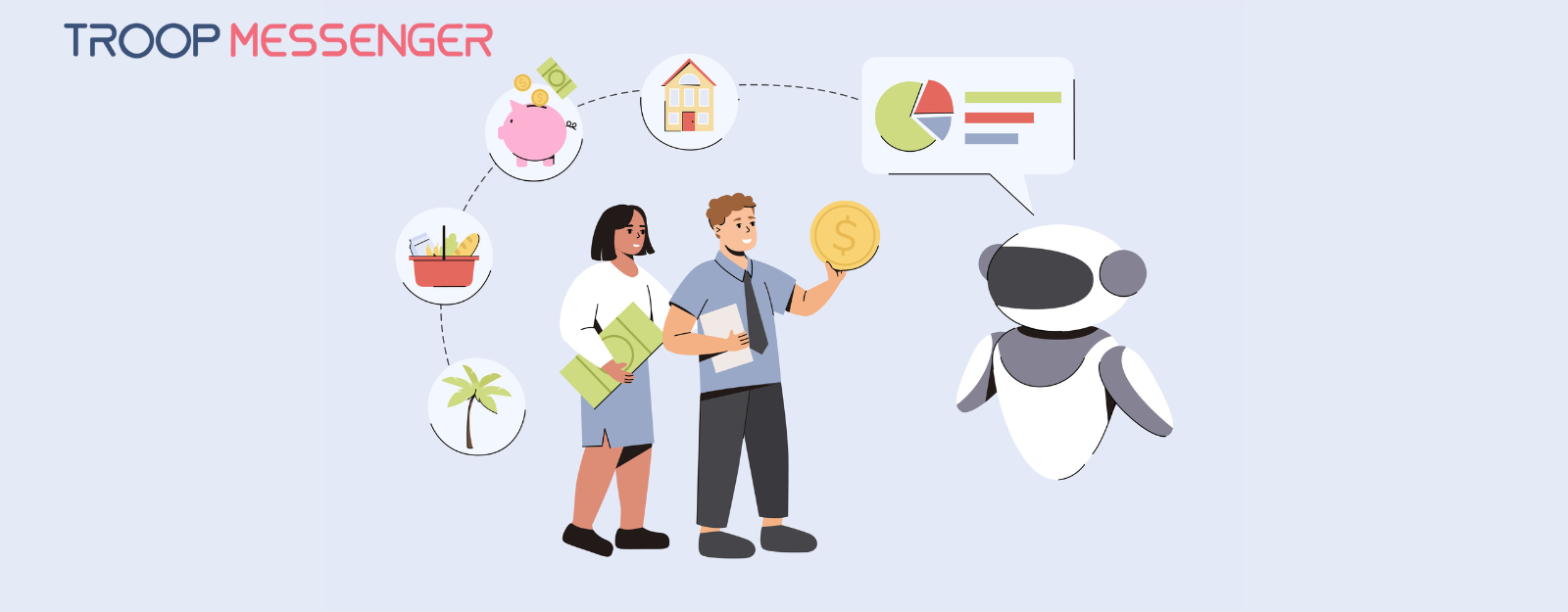Connect with us

Brainstorming Session Ideas & Tools To Enhance Team Collaboration
Brainstorming is one aspect of team collaboration that can feel particularly daunting if you aren’t guided well on how to conduct it efficiently. Picture it for yourself. Imagine sitting at a conference table and having to come up with brainstorming session ideas from scratch without knowing the first thing about it.
Every input or critique from an otherwise well-intentioned peer or colleague can quickly start to feel like a scathing remark. A group brainstorming session is right up there with “delivering presentations” as one of the biggest social lapses in the modern employee. And it isn’t a surprise as to why.
Coming up with original ideas in a group is bad enough for most people, let alone having to bear the brunt of it being put down immediately. Especially when it’s to do with an idea you took an hour and three coffee cups to squeeze out.
So where do we all go wrong with our brainstorming methods? The focus of today’s article is on how to fix this problem. By the end of this article, you’ll know the potential reasons brainstorming sessions fail and also learn about some best practices and tools for running effective sessions.
Table of Contents
Why Most Brainstorming Sessions Don’t Work
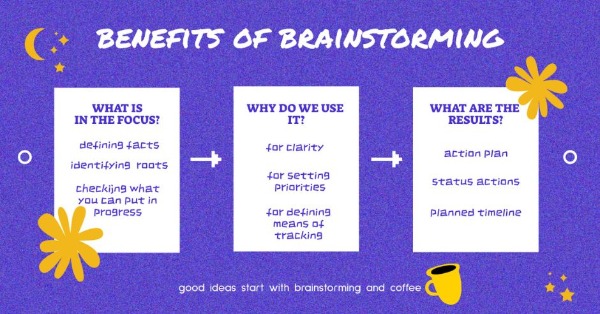
Brainstorming sessions often fail due to a lack of proper leadership or due to the participants finding it tricky to navigate around some of the most common mistakes in any session. These mistakes are mostly social but can be attributed to improper implementation of the meeting.
The big question is why our creative solutions and problem-solving techniques suddenly fall flat around people. We might have a hunch…
After sitting through countless group brainstorming sessions, we’ve highlighted some of the most common reasons that can derail creative thinking in team members. These are:
1. Extroverts Snatch Opportunities
Extroverts that are gifted thinkers tend to cause unbalanced conversations by dominating the brainstorming exercise. The people that normally speak the most speak the most, whereas the rest are more than happy to resign to a few nods here and there.
It is perhaps where a team lead’s project management is tested as they handle people from different backgrounds and with different personalities.
2. Awkward Silences
Let’s be honest, the most prepared person in any brainstorming session is the one who initiated it. The rest of the participants are mostly along for the ride with a few who’ll add in real-time. In the end, all that’s left is an hour’s worth of awkward silence where no one knows how to proceed.
3. Converging Idea Generation
The anchoring effect can cause rapid ideation from a few which can stifle everyone else’s creative juices. It typically occurs when one or two concepts are floated in the mind mapping session and everyone hyper-focuses on them instead of coming up with unique and fresh ideas themselves.
4. Pandemic Remnants
The Covid-19 pandemic forced all employees to maintain their routines remotely. It meant that video conferencing was the primary method of brainstorming for most people and that, as anyone who’s experienced hours of Zoom and Google Meet calls will tell you, isn’t the most ideal situation to capture the creative energy of the team.
7 Proven Brainstorming Ideas And Techniques
Fortunately, we’ve got a few solutions that may prove beneficial in overcoming all roadblocks when you begin your brainstorming sessions. Let’s take a look at them.
1. Rapid Ideation
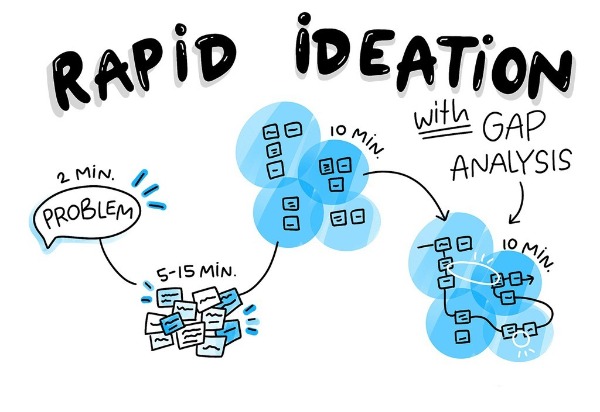
Rapid ideation is a brainstorming technique that relies on a set amount of time and encourages all participants to write down lots of ideas before the time runs out. This method helps everyone to come up with as many ideas as they can before they start to overanalyze and select them one by one.
One company that best employs this technique in its client and team meetings is Digitarial. As a digital affiliate marketing agency, they heavily rely on brainstorming sessions within teams and with clients to generate ideas.
Digitarial uses the rapid ideation process in an effective way to get the entire team to participate regardless of how premature their ideas may be. And they make sure that the participants do not eliminate anything before the time is up. Once the time limit is up, everyone contributes to the group discussion.
This allows them to ensure that they are on the same page with the client before setting off on a project. With the rapid ideation method, the company ensures every member of each department has a strategy and development guide before setting off.
It helps them create successful campaigns and strategies for the clients and come up with near-perfect ideas for them.
2. Online Brainstorming (Brain Netting)
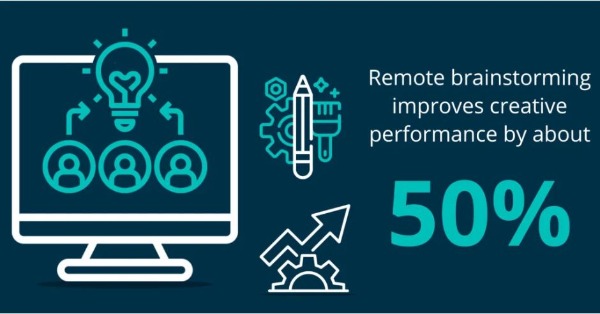
Brain netting is a popular method of brainstorming where all team members select a centralized location to write or send their ideas. This centralized location can be a shared notebook, Google Doc, or Troop Messenger group chat.
Today’s productivity and collaboration tools are perfect for online brainstorming since they feature group chats. Skype, Discord, and Microsoft Teams are all excellent examples. Online brainstorming is particularly useful if your teams are distributed geographically or are working remotely where you can also practice Roberts Rules of Order to come up with effective meeting sessions.
Take KURU, one of my favorite shoe brands, as an example of this technique. When coming up with a new line of shoes, its lead product developer conducts online brainstorming sessions with its remote and on-site designers. During the sessions, providing them with a shared space gets the idea machine rolling.
Once everyone has participated, they list down the ideas and designs that are worth pursuing and schedule separate follow-up meetings for critique, planning, and execution. The use of this methodology by KURU allows everyone to be on the same page (literally) and lets the design team pitch in and share ideas whenever convenient and when inspiration hits.
The biggest advantage of this technique is that it prioritizes remote members of a team and gives them a voice. Ideas can be shared anonymously too to help the team contribute with more freedom.
3. Brainwriting
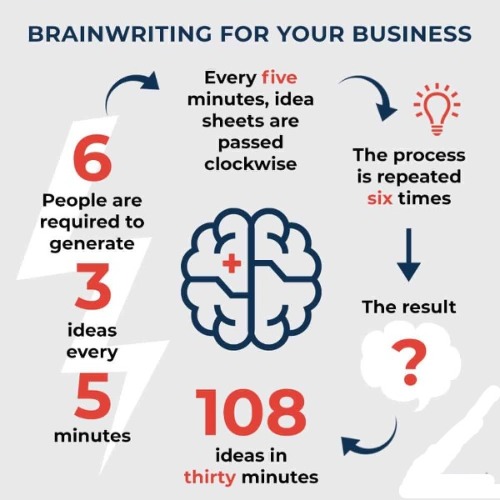
Brainwriting is one of the few non-verbal group brainstorming techniques on our list. The idea behind this method is to have one member of the meeting initiate an idea on a piece of paper and pass it to the person on their side. Every person after the first will add bullet points, expand the idea further, and provide creative strategies.
Once the paper has made its way around to the initiating person, a second round is started with someone else on the table. Remote teams can use Troop Messenger or any other collaborative or chat tool for this technique.
Putting this method into practice, your auto repair and maintenance company decides to go online. But to test the waters, you want to start with one service first. You have a few ideas for it but are not sure which one to add. Perhaps you could start an online brake repair service or have a washing and interior cleaning service too.
Having the shareholders and shop managers sit around a table and practice brainwriting can help you identify the most important service your business should invest in. One by one, they will list down the service they think is best to be offered online along with the supporting arguments.
The point of this exercise is to have everyone contribute with creative ideas and solutions and solve two of the problems we highlighted earlier; extroverts snatching opportunities and converging idea generation. Brainwriting can also help eliminate the bias that is normally placed with the first idea that comes to mind.
4. Reverse Brainstorming
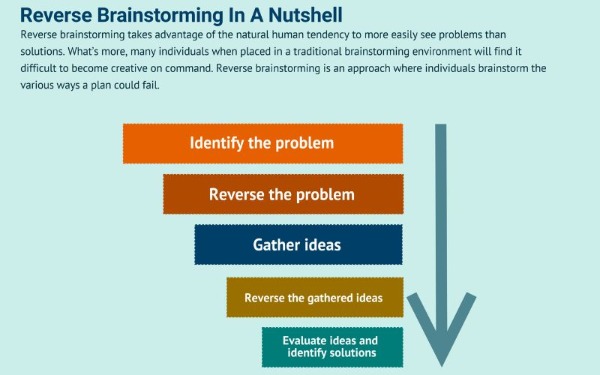
Reverse Brainstorming is a technique that flips the conventional way of brainstorming on its head. The technique relies on our natural ability to more easily see problems than solutions.
Its implementation is very simple – instead of asking all participants for solutions to a problem, ask them all the different ways in which they can predict the plan would fail.
The reason for the technique’s implementation is it helps all participants to see gaps in a plan rather than work on any number of ideas to build a strategy for success. Once everyone in the team has a list, you can whiteboard specific examples and work your way backward to achieve the opposite effect.
To deploy this method, you start with one of two "reverse" questions:
- Instead of asking, "How do I solve this problem?" ask, "How could I cause the problem?"
- Instead of asking "How do I get these results?" ask, "How could I achieve the opposite effect?"
To put this into a real-world scenario is easy too. A company that sells gym supplements needs to find ways to attract an older audience to its products. Instead of thinking of ways in which they can market their pre-workout supplements and protein shakes to people above 50 years old, they may need to introspect all the reasons they’d fail in convincing them to purchase.
By using the reverse brainstorming technique, the issues highlighted then could be:
- Older audiences would hate it if the product labels and graphics were aggressive and “youthful”.
- Older audiences wouldn’t use any products that give them the infamous “pre-workout itch” since they’d be too distracted or troubled by their body’s response to focus on the workout.
Working backward, the solutions can then be identified for the two problems.
- Use simpler packaging designs without any aggressive text or images.
- Use supplements that have fewer harsher compounds, such as beta-alanine and caffeine.
5. Round-Robin Brainstorming

Round-robin brainstorming is a technique where each participant contributes at least one idea to the session. The rules to this technique are simple and very similar to brainwriting and rapid ideation where an idea has to float around the entire room before a second is presented, or the current is critiqued.
Another rule is that no member of the team can exclaim that their idea was already mentioned. Brainstorming initiators are expected to return to each person once they’ve had more time to build on their ideas.
This method also works best if the team is told in advance and has time to prepare ideas before the meeting. Similar to rapid ideation, this technique only works if every member contributes and is required to pitch in before everyone begins critiquing the ideas.
6. SWOT Analysis
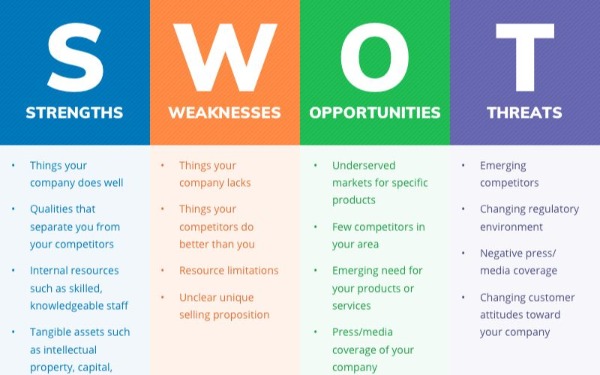
SWOT, or strengths, weaknesses, opportunities, and threats are the exact four indicators that all team leaders will need to identify and better plan for their projects.
To begin, you need a piece of paper or sticky notes with four columns, S, W, O, and T. From here, you can list down the characteristics of your idea and place them in the required column.
For instance, your web development firm is creating a client project around a website to stay updated with the latest stock market news and trends and track stock prices. SWOT analysis for it during the brainstorming session would look something like this:
- S (Strength) - It features real-time updates and news and having a built-in investment tool for prospective share-buyers would make it profitable for the company.
- W (Weaknesses) - Because of the website weight and constant upgradation that is required, it can become very costly for the company to handle.
- O (Opportunity) - The project fits a very niche category and has high strategic and technical barriers to entry, thus minimizing the competition.
- T (Threat) - Time and legal challenges the website has to face when complying with government regulations.
SWOT analysis is an excellent form of brainstorming and can help provide a different perspective on an existing idea and help you understand it more from the get-go.
This template can even highlight any big issues that your idea may face before you pitch it elsewhere and can be a great method to highlight okay ideas from the really bad ones.
7. Starbursting
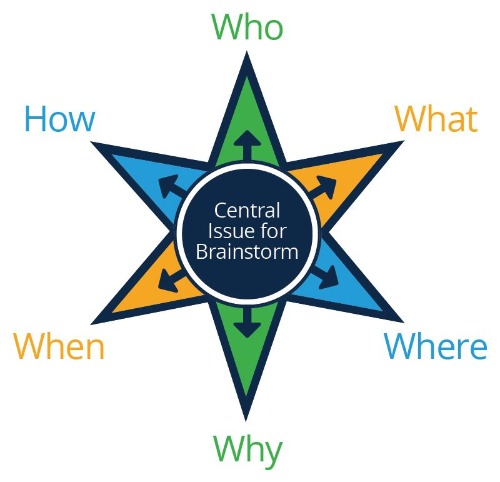
And finally, starbursting is a later-stage brainstorming technique that can be used beyond the initial phase of the brainstorming process. Once the group has already decided on an idea to move forward with, starbursting can help elaborate it in detail and even provide ways for the idea to be executed.
In this brainstorming session technique, your team will place the selected idea at the center of a whiteboard and then create a six-point star around it. Each point on the star highlights a question: who, what, when, where, why, and how.
This method of brainstorming is highly useful for mergers and acquisitions. For instance, when analyzing and evaluating an online business, you need to ask the following questions to yourself.
- Who - Who is this website for?
- When - When is the best time to acquire it?
- What - What are the current innovations and trends in the market that can influence its sales in the future?
- Where - Where does the traffic come from and what's the conversion rate?
- Why - Why are they selling their online business to us?
- How - How do we manage customer negotiations once the initial meeting is made?
Since this technique places its focus on questions rather than answers, your group will be encouraged to examine these questions from every angle and give their point of view by highlighting the strengths and potential weaknesses.
The starbursting technique also frees the person who initially presented the idea from the responsibility of defending it from scrutiny or figuring out ways to execute it alone. With this, the team works on solutions together.
3 Best Tools To Enhance Team Collaboration
Once you have the techniques and various methodologies nailed down, you can shift your focus to providing the best collaborative tools to help boost your team’s brainstorming workflow and encourage teamwork.
Effective brainstorming is a two-part affair. The techniques and tools go hand-in-hand and missing out on anyone can set your sessions up for failure. Here are our recommendations for the best three brainstorming session tools for you.
1. Troop Messenger
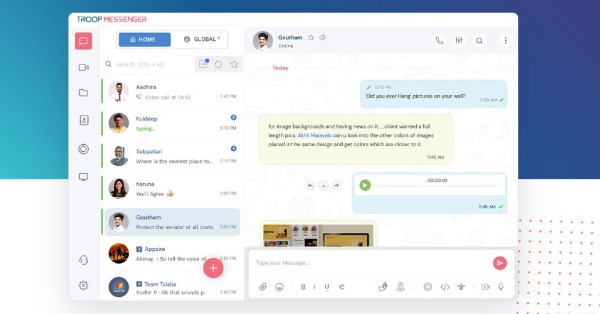
Troop Messenger is the world’s leading team collaboration and chatting application. Leveraging the power of group chat, calls, and video conferencing, the tool is the ideal choice for any workplace or student brainstorming session - whether in-person or remote.
Troop Messenger enables all members of a brainstorming session to collaborate freely, text and chat, and initiate calls and video meetings. Particularly for design teams, Troop Messenger can be highly useful.
For instance, designers at a company that sells face masks online have been asked to come up with new designs for children’s face masks for the upcoming Christmas. With its file-sharing and remote screen-sharing feature, Troop Messenger can get everyone on the same page immediately.
Through the group chat feature, the marketing team can provide the designer with a brief for the face mask designs. The group calling feature will allow the designers to get clarifications from the marketing team.
Once all the doubts are removed, the design team can then use the screen-sharing feature for brain netting on new designs within the team before sharing the draft with the marketing team.
And since all messages and calls are end-to-end protected, your teams can safely discuss all enterprise-level and confidential plans with complete peace of mind.
Pricing
Troop Messenger comes in three plans:
- 7 Days Free Trial
- Premium - $2.5/user/month
- Enterprise - $5/user/month
- Superior - $9/user/month
2. Coggle

Coggle is the de facto brainstorming facilitator and tool of the 21st century and has become an industry staple in workspaces and university campuses globally. This popularity is in large part due to its mind maps and flowcharts creation and sharing ability.
Coggle makes it incredibly simple to visualize your own ideas while brainstorming. There are no downloads or installations necessary because Coggle operates in your browser. And the best part about this tool is you can share it online with your team in real time.
Pricing
Slack has four pricing plans:
- Free Forever - $0
- Awesome - $5/month
- Organization - $8/month/user
3. Google Docs & Google Sheets

While Google’s suite of productivity tools was meant to take on Microsoft’s Office line of products, they have claimed their case as capable collaborative and brainstorming tools as well.
Google Docs & Google Sheets, especially, are some of the most popular tools among professionals and students using the free platform to list down all brainstorming questions and ideas. They can choose to leave comments and suggestions or participate as viewers only with the tool.
Powered by Google’s superior real-time data pipeline, it is a product that is constantly learning and evolving with time. And since it is universally available and only requires a Gmail account, to begin with, it is also the most easily-accessible tool available online today.
Pricing
Google Docs and other office apps are free to use, but additional storage costs are extra.
- Business Starter ($6/user/month): Provides 30GB storage per user
- Business Standard ($12/user/month): Comes with 2TB storage per user
- Business Plus ($18/user/month): You’ll get 5TB of storage per user with this plan.
- Enterprise (Custom Pricing): With this plan, you can get as much storage as you want.
Conclusion
Brainstorming techniques and tools are a natural stepladder that requires participation and input from most (if not all) of the members and participants of the session. These sessions are very easy to fall off-track but with the right techniques and tools at your disposal, you’re on your way to unparalleled levels of productivity and collaboration.
Troop Messenger’s vast selection of team-building and collaboration-forward tools will help you make these brainstorming sessions a hit and lead teams as effectively as possible.
If you want to learn more about the features of Troop Messenger, please visit our website or contact us by email at support@troopmessenger.com.




